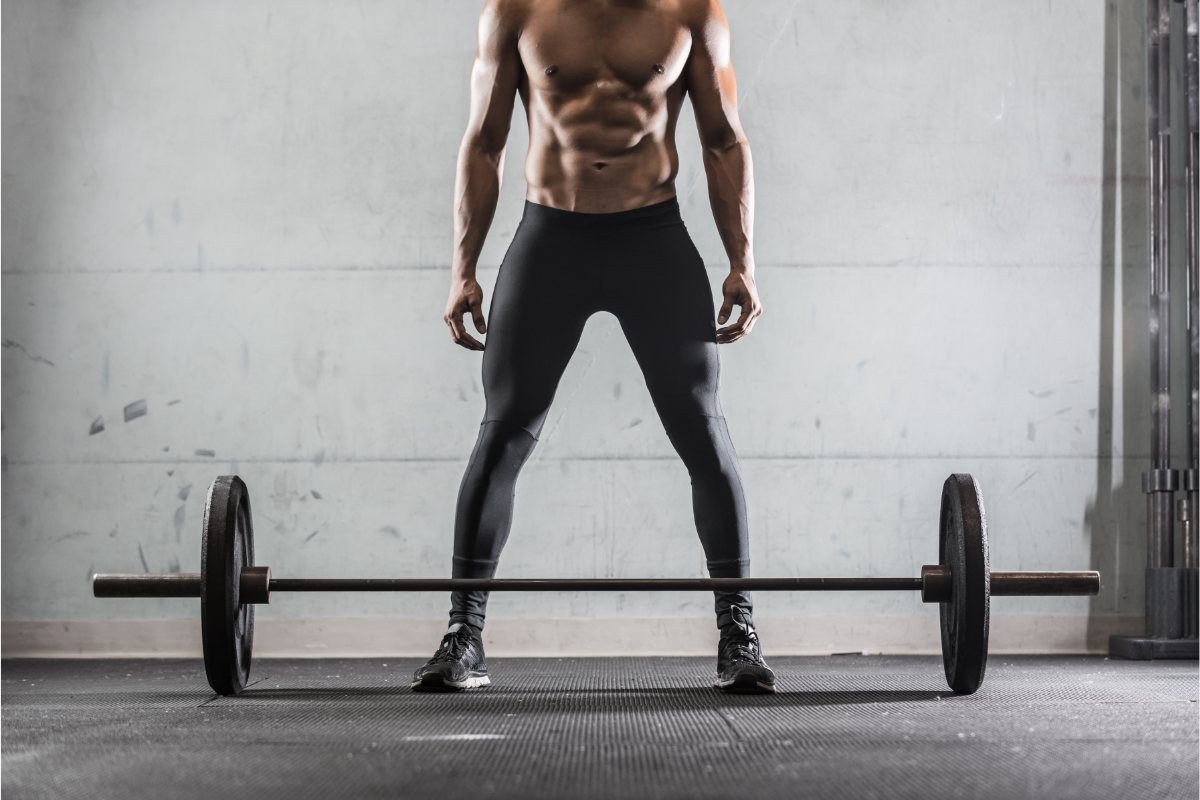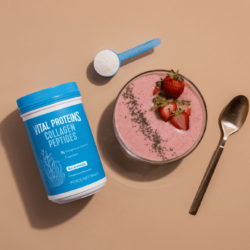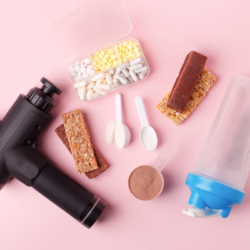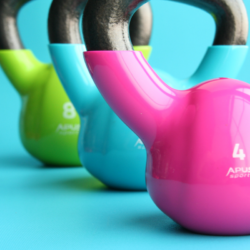Welcome to the fascinating world of bodybuilding, a journey where each stage – building, drying and maintenance – is a fundamental pillar in sculpting the body of your dreams. Whether you’re a beginner looking to understand the basics of bodybuilding, or a regular exerciser wanting to fine-tune your technique, this article is your essential guide. Here, you’ll discover essential strategies for successfully navigating these three crucial phases, practical tips for maximising your results, and mistakes to avoid for steady progress. Weight training is more than just a set of exercises; it’s a science and an art that requires understanding and dedication. So, whether you want to gain muscle, lose fat or maintain your current shape, this guide is your first step towards achieving your fitness fitness goals.
Gaining mass: How can you maximise your muscle growth?
Gaining mass is not simply a question of extra calories; it is a complex physiological process supported by science. A calorie intake that exceeds energy expenditure is crucial (1).
In general, it is recommended to start with a mass gain phase. Although this approach may cause anxiety in those seeking to lose weight, it is necessary to prepare the body for success. In fact, if you are in a prolonged calorie deficit, your metabolism may become resistant to fat loss. Make sure you consume enough calories, macronutrients and micronutrients to support your body’s normal physiological functions. Start by boosting your metabolism!
Recommended exercises
Bodybuilding is an art of body transformation that requires not only the right diet but also rigorous training. To achieve significant results, it’s crucial to focus on exercises that effectively target several muscle groups. Here’s a list of the essential exercises that should be part of any serious bodybuilding routine.
The Squat: Essential for quads and booty
The squat is often dubbed the ‘king of exercises‘ in bodybuilding (and yet my heart swings between squat and hipthrust!). And for good reason! This multi-joint exercise involves several muscle groups, in particular the quadriceps, glutes and core stabilising muscles. Not only does it help you develop powerful leg muscles (2), it also improves your functional strength and balance.
Key points:
- Muscles exercised: Quadriceps, Buttocks, Hamstrings, Core
- Technique: Keep your back straight and lower yourself by pushing your hips back and bending your knees.
- Tip: Incorporate variations such as the front squat, sumo squat or single-leg squat to break up the monotony and stimulate muscle growth.
Bench press: Great for the pecs
The bench press is the ultimate exercise for targeting the pectoral muscles. It also engages the triceps and deltoids, making it an excellent choice for developing a muscular chest and toned arms.
Key points:
- Muscles exercised: Chest, Triceps, Deltoids
- Technique: Lie on a flat bench, slowly lower the bar towards your chest and then raise it back up.
- Tip: To maximise muscle recruitment, try variations such as the incline or decline bench press.
Pull-ups: Essential for the long back
If you’re looking to develop a V-shaped back, pull-ups are the exercise for you. This exercise primarily works the lats, while also working the biceps and forearms.
Key points:
- Muscles exercised: Lats, Biceps, Forearms
- Technique: Grip the bar with a pronated or supinated grip, pulling your body upwards until your chin is above the bar.
- Tip: Vary the width of the grip to target different aspects of the lats.
Exercise is only half the equation when it comes to bodybuilding. Nutrition also plays an essential role in muscle growth and recovery. You mustn’t neglect the macro nutritional breakdown to maximise muscle growth!
Strategic nutrition: Managing macros
To obtain the best results, it is imperative to maintain a balance between proteins, carbohydrates and fats (3). Proteins are the mainstay of muscle growth, carbohydrates provide the energy needed for intensive training, and fats support hormonal and cellular functions.
Key points:
- Protein: Crucial for muscle repair and growth.
- Carbohydrates: Provide energy for optimal performance.
- Lipids: Support hormonal functions and provide essential fatty acids.
Whey Protein: The boost for muscle recovery
Whey protein is one of the purest and fastest-absorbing forms of protein. It is particularly effective in helping muscle recovery after training.
Benefits:
- Ease of absorption: Whey is rapidly assimilated by the body, speeding up recovery.
- Complete amino acid profile: Contains all the essential amino acids needed for muscle growth.
The importance of sleep and recovery
Having discussed training and nutrition strategies, it’s crucial to address another fundamental pillar of bodybuilding: sleep and recovery.
The vital role of sleep
Sleep plays an essential role in muscle recovery and athletic performance. During sleep, our bodies secrete growth hormones, which are essential for the repair and growth of the muscles used during training. A good night’s sleep, i.e. around 7 to 9 hours for an adult, helps to :
- Optimise muscle recovery.
- Improve sporting performance.
- Reduce the risk of injury.
- Improve concentration and motivation.
Active recovery
To recover, it’s not enough to get a good night’s sleep. Active recovery, such as gentle stretching, yoga or light walking, can also promote muscle healing and improve blood circulation, making it easier to eliminate the toxins accumulated during exercise.
The dangers of overtraining
Overtraining may seem like a quick way to achieve results, but it’s a dangerous trap. Overtraining is characterised by persistent fatigue, reduced performance, sleep problems and increased vulnerability to injury. To avoid overtraining, it is essential to :
- Listen to your body and allow sufficient time for recovery.
- Alternate the muscle groups worked and vary training intensities.
- Plan complete rest days to allow for full recovery.
By paying equal attention to training, diet, sleep and recovery, you can ensure healthy, lasting progress in bodybuilding.
Weight gain in a nutshell:
- Resistance training: 3 to 4 days a week, or even 4 to 5 if you already have this level of activity.
- Avoid intensive cardio: Activities such as walking or cycling are acceptable, however.
- Calorie intake: Increase your daily intake by 200 to 400 calories or 10 to 20% of your total calorie intake.
- How long does mass gain last? the duration of this phase can vary from 8 to 16 weeks, depending on your personal goals.
Training programme for beginners : Inspired by Mind Pump
For beginners to bodybuilding, it’s essential to start with a well-structured programme that effectively balances intensity and safety. Inspired by the renowned Mind Pump website, this beginners’ training programme is designed to introduce you to the fundamentals of bodybuilding. Over a 4-week period, with a frequency of 2 to 3 sessions per week, this programme includes a variety of exercises to work the whole body. The emphasis is on technique and gradual progression, which is crucial to avoiding injury and ensuring lasting muscle growth. In fact, here’s a detailed table of the exercises to be performed, to guide you through each stage of your bodybuilding journey.
| Day | Exercise | Sets x Repetitions |
|---|---|---|
| 1 | Barbell squats | 4 x 5 |
| Bench press | 4 x 5 | |
| Pull-ups (assisted or unassisted) | 3 x 5 | |
| Shrugs | 3 x 3-6 | |
| Bar curls | 2 x 6-8 | |
| EZ Bar Skullcrushers | 2 x 6-8 | |
| 2 | Deadlifts | 4 x 5 |
| Overhead Press | 4 x 5 | |
| Seated press | 3 x 5 | |
| Dumbbell Shrugs | 3 x 3-6 | |
| Dumbbell Hammer Curls | 2 x 6-8 | |
| Dips | 2 x 6-8 | |
| 3* | Romanian Deadlifts | 4 x 5 |
| Lunges | 4 x 6-8 | |
| Incline press | 4 x 5 | |
| One-arm Rowing | 3 x 5 | |
| Lateral raises | 3 x 6-8 | |
| Preacher curls | 2 x 6-8 | |
| Tricep Pushdowns | 2 x 6-8 |
*Note: Day 3 should only be performed if you are not sore and have recovered well from Day 2.
Details
- Frequency: 2-3 times a week (with 1-2 days rest between sessions to recover).
- Duration: 4-week cycle with one week off (deload).
- Sets & Reps: 2-5 sets with 3-6 repetitions per exercise (rest up to 3 minutes between sets).
This programme is an excellent starting point for beginners in bodybuilding, allowing you to develop strength and technique before moving on to more advanced routines.
Cutting phase : I want my abs to show!
After months of hard work and intense training to gain muscle mass, it’s time for the dry phase. The aim of this stage is to reduce body fat while preserving the muscle you’ve acquired, revealing a more sculpted and defined physique. According to a recent study published in the Journal of Sports Science & Medicine, a specific ratio of macronutrients can help maximise the preservation of muscle mass during a lean phase (4).
Key points:
When it comes to sculpting a lean physique, diet takes on crucial importance. It’s not just the quantity of calories you consume, but also the quality of those calories that makes all the difference. Here are some macronutrients to watch out for:
Protein: A must for muscle definition
Proteins play a central role in preserving muscle mass, especially during a dry phase when calorie deficit is in force. According to a study published in The American Journal of Clinical Nutrition, sufficient protein intake can help minimise the loss of muscle mass during a dry phase (7).
Practical advice:
- Opt for lean protein sources such as chicken, fish and eggs.
- Protein shakes, particularly whey, are a practical alternative for topping up your intake.
Carbohydrates: Balance is key
Too many carbohydrates can lead to fat storage, but too few can affect your energy levels and training performance. The right balance is therefore essential.
Practical advice :
- Go for low glycaemic index carbohydrates such as sweet potatoes, oats and vegetables.
- Consume the majority of your carbohydrates around your training sessions to maximise energy.
Fats: Take it easy
Fats have more calories than proteins and carbohydrates, providing 9 calories per gram. So it’s crucial to eat them in moderation.
Practical advice :
- Choose sources of good fats such as nuts, avocado and olive oil.
- Avoid saturated and trans fats as much as possible.
BCAA (Branched Chain Amino Acids): The Ally of your lean body
BCAAs are known for their effectiveness in maintaining muscle mass during periods of calorie deficit.
Benefits :
- Reduces muscle fatigue.
- Helps maintain protein levels in the body.
Doing a cut in a nutshell:
- Do I need to weigh myself when I’m doing a cut? don’t rely solely on the scale. Use tape measures and skinfold tweezers for a more accurate assessment of your body composition.
- How long does a cut last? just like the mass gain phase, the dry phase generally lasts from 2 to 4 months, depending on your objectives.
- Reduce resistance training: Continue to do weight training but reduce the frequency.
- Incorporate cardio: 2 to 3 sessions a week of cardiovascular activity.
- Calorie readjustment: Reduce your daily calorie intake by 10 to 15%.
Should you avoid fat to build muscle?
There was a time when popular dietetics recommended avoiding fat to lose weight. This notion, popular in the 80s, claimed that fat-free foods were the key to a healthier life. Today, we know that this idea is largely erroneous. So what about fat when you want to build muscle?
What are fats, lipids and fat?
To begin with, it’s crucial to understand what fat is. Fat is the main way our body stores energy. They are made up of glycerol molecules and fatty acids. There are three main types of fat: unsaturated, saturated and trans. Each type of fat has a different effect on our health, so it’s essential to know which ones to choose.
Types of fat
- Unsaturated fats: These fats are generally good for cardiovascular health and are found in foods such as fish and olives.
- Saturated fats: These are found in meat and dairy products. They can increase ‘good’ cholesterol (HDL) and are not necessarily harmful to the heart, contrary to certain preconceived ideas.
- Trans fats: These are found in processed foods and can increase the risk of cardiovascular disease.
fat is life’: true or false?
Let’s take a look at four key functions that fats perform in our bodies:
- Energy production: Fats are an excellent source of energy.
- Vitamin absorption: They help with the absorption of fat-soluble vitamins such as vitamin A, D, E and K.
- Hormone regulation: Essential fatty acids contribute to the production of certain hormones.
- Satiety: Fats contribute to the feeling of satiety, which can be useful for managing appetite.
Should you avoid eating fat to build muscle?
The answer is clearly no. Fat plays a key role in various metabolic processes, including the production of hormones such as testosterone, which is vital for muscle growth (8). What’s needed is a balanced approach. You can incorporate healthy fats such as olive oil, avocado or nuts into your diet. It’s also crucial to note that every gram of fat contains 9 calories, so moderate consumption is recommended if your aim is also to lose body fat.
Fats are not the enemy of muscle growth. Rather, it is an important source of nutrients and energy. So for someone looking to build muscle, it would be counterproductive to eliminate fat from their diet. It is important to choose high-quality sources of fat and incorporate them judiciously into a well-balanced diet.
What is the maintenance phase in bodybuilding?
In bodybuilding, the maintenance phase is a crucial balancing stage. It’s not about bulking or cutting, but stabilisation. Your aim during this phase is to retain the gains in strength and muscle you’ve made, while giving your body a well-deserved break from the more intensive cycles.
Why is the maintenance phase essential?
The value of the maintenance phase is often underestimated, but it is vital for a number of reasons:
Body longevity
Maintenance prepares your body for future cycles of mass gain or fat reduction, while minimising the risk of overexertion or injury.
Psychological recovery
It’s not just your body that needs a rest; your mind does too. This phase offers a mental break from demanding diets and training sessions.
Hormonal homeostasis
By avoiding calorie extremes, you give your body the opportunity to rebalance its hormone levels which is good for your general well-being.
Nutritional strategies in the maintenance phase
The key to nutrition during this phase is balance. You aim to consume enough calories to maintain your weight, without any significant excess or deficit.
Protein
Although your protein requirements remain high, they don’t need to be as exaggerated as in the mass gain phase. Opt for high-quality proteins such as chicken, salmon and eggs.
Carbohydrates
Carbohydrate intake should be adapted to your level of physical activity. Whole grains, green vegetables and fruit are your best allies.
Fats
Beneficial fats such as omega-3 fatty acids remain essential. You can find them in foods such as nuts, avocados and virgin olive oil.
Micronutrients
Don’t overlook vitamins and minerals, which play a central role in your recovery and overall health.
The role of food supplements in mass gain
Adding supplements to your diet can be a determining factor in the success of your bodybuilding programme. Whether you’re building mass, drying out or maintaining, each phase can benefit from the addition of specific supplements.
- Branched Chain Amino Acids (BCAAs) bCAAs are often considered the holy grail during the lean phase. They minimise muscle breakdown, which is crucial when you’re in a calorie deficit. In addition, BCAAs promote protein synthesis and can therefore help maintain muscle mass even when calorie intake is reduced.
- Whey Protein essential for anyone in the process of building muscle mass, whey protein is a fast, effective source of protein. It promotes muscle recovery after intensive training sessions and supplies muscles with the essential amino acids needed for growth.
- Creatine used mainly in the mass gain phase, creatine helps boost performance and energy during training. This enables you to lift heavier weights, contributing to faster muscle mass gain.
- Fat burners these supplements, often containing caffeine and other thermogenic substances, are most useful in the lean phase. They increase metabolism and help burn more calories, which can be particularly useful when you’re looking to reduce your body fat percentage.
- Omega-3 these essential fatty acids are beneficial in all phases. They support heart health, reduce inflammation and can even help muscle recovery.
- Magnesium magnesium plays an essential role in muscle contraction and relaxation, as well as in the transmission of nerve impulses. It also contributes to energy metabolism, helping to optimise physical and intellectual performance.
I go to the gym every day and I don’t gain any muscle, why?
If you go to the gym every day and can’t gain any muscle, you’re not alone. Many people are faced with this dilemma, wondering why their intensive efforts are not bearing fruit. There are a number of factors that could explain this stagnation, and this article looks at the essential elements to consider.
How much should I eat to gain muscle?
The first step is to assess your diet. If you’re not on a calorie surplus, or if your protein intake is insufficient to repair your muscles, your progress may be hindered. The recommended intake is at least 1 gram of protein per pound of body weight and a calorie consumption higher than your maintenance level. Favour whole and minimally processed foods, adapting your carbohydrate and fat intake to your preferences.
Progressive overload
The effort you put in at the gym is the second critical factor (6). If you don’t regularly increase the weight or the number of repetitions, how can you expect muscle hypertrophy? Each session should provide a new stimulus for the muscle, by increasing either the weight lifted or the number of repetitions performed.
Movement execution
Maintaining good form during exercise is also crucial. Chasing the weight at all costs, using momentum rather than muscle control, can compromise your gains. It’s important to maintain a brain-muscle connection and ensure that the muscles targeted by the exercise are actually being used.
Periodisation
Adopting a periodisation strategy can be useful (5). Avoid limiting yourself to a single range of repetitions or volume. Even a minor change in these parameters can be a powerful new stimulus for muscle growth.
Do I need to follow a programme to progress in the gym?
Finally, consistency of effort is the key to success. Muscle development is not a sprint, but rather a long-distance race requiring months or even years of commitment. Make sure you follow a training programme and nutritional plan that are viable in the long term. In addition, take into account the risk of overtraining and give yourself adequate rest, aiming for 8 to 9 hours’ sleep a night.
All you need to know about Creatine
You’ve already read our complete guide to bodybuilding, exploring the different phases of fitness, from gaining mass to getting lean. Now let’s discover something just as crucial: creatine. You may already have read about its mysteries and benefits in our specialist articles,“Why your brain loves creatine: the secret revealed” and “What are the benefits of creatine?
Now it’s time to test your knowledge! This quiz gives you the opportunity to check what you’ve learned about this popular supplement. Share your results in the comments to enrich our conversation about creatine. Will you rise to the challenge and demonstrate your skills on the subject? Take the quiz and let’s see how well you know creatine!
Quiz
- What is creatine? A. A steroid B. An amino acid C. A vitamin D. A mineral
- What is the main role of creatine in the body? A. Burn fat B. Increase endurance C. Provide energy to muscles D. Lower cholesterol
- How is creatine usually consumed? A. In the form of green vegetables B. As a powder or capsule supplement C. By applying a cream D. By injection
- What is a potential side effect of creatine consumption? A. Memory loss B. Increased body weight C. Decreased appetite D. Blurred vision
- Is creatine effective for all types of physical activity? A. Yes, for all activities B. No, mainly for endurance activities such as running C. Yes, but mainly for strength and power sports D. No, it is only effective for weight training
- Who should avoid taking creatine? A. The elderly B. Professional athletes C. People with kidney problems D. Teenagers
- How long do you have to take creatine to see results? A. Immediately B. After a few days C. Between 2 and 4 weeks D. Several months
Answers:
- B. An amino acid
- C. Provide energy to muscles
- B. As a powder or capsule supplement
- B. Increase body weight
- C. Yes, but especially for strength and power sports
- C. People with kidney problems
- C. Between 2 and 4 weeks
Source :
- https://pubmed.ncbi.nlm.nih.gov/31482093/
- https://pubmed.ncbi.nlm.nih.gov/15107010/
- https://www.ncbi.nlm.nih.gov/pmc/articles/PMC5421125/
- https://pubmed.ncbi.nlm.nih.gov/30728780/
- https://www.ncbi.nlm.nih.gov/pmc/articles/PMC6950543/
- https://pubmed.ncbi.nlm.nih.gov/32883378/
- https://pubmed.ncbi.nlm.nih.gov/8947430/







